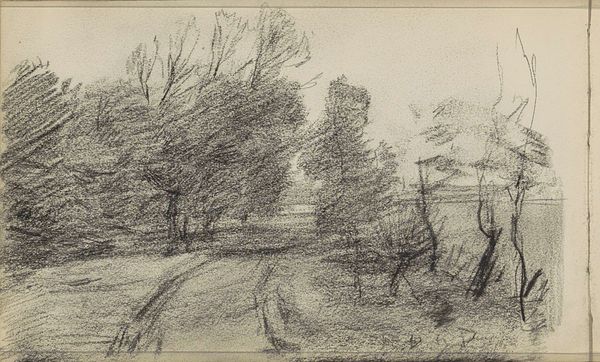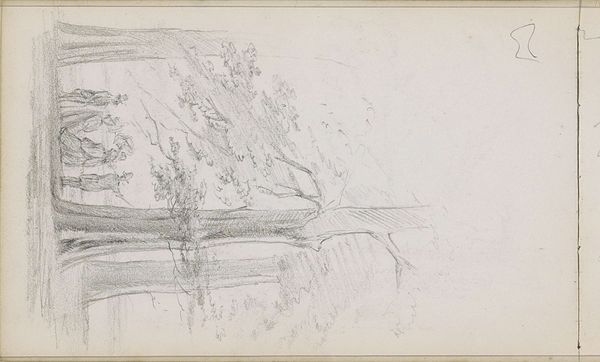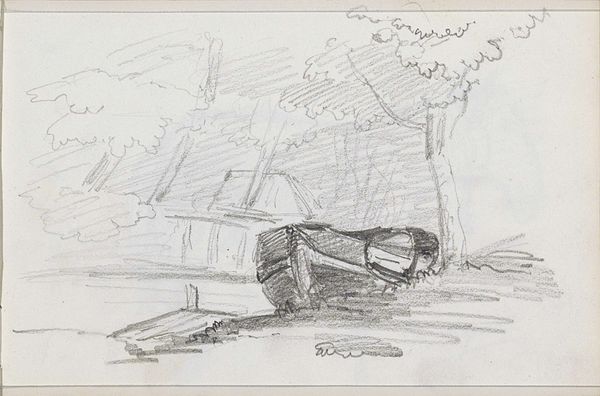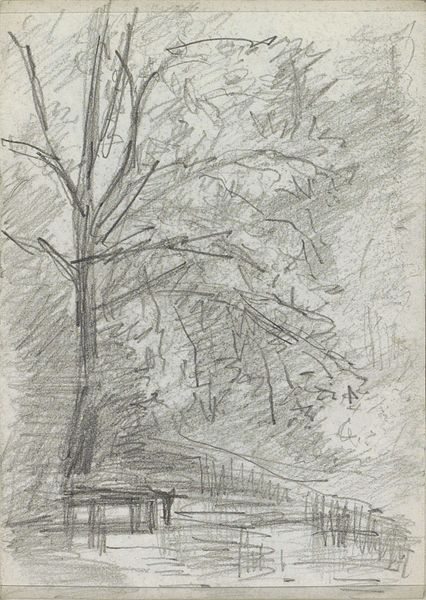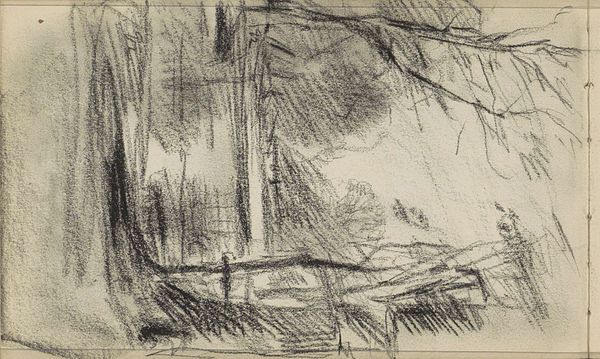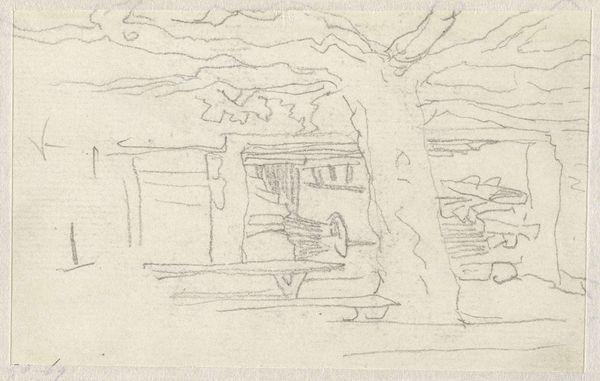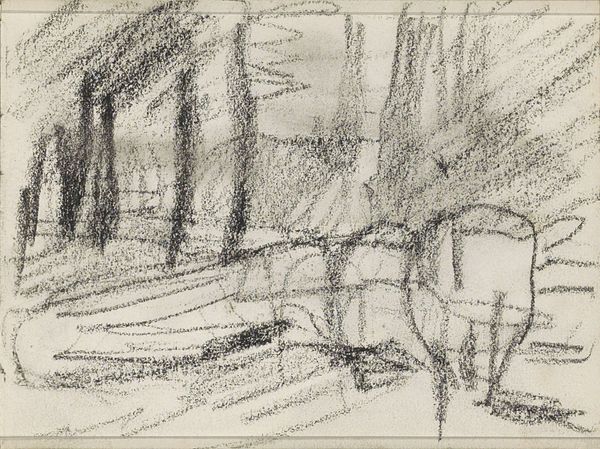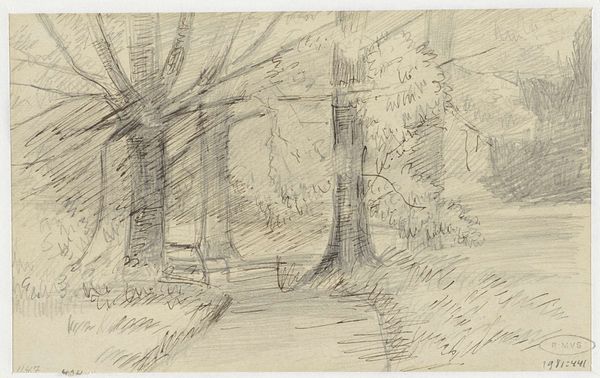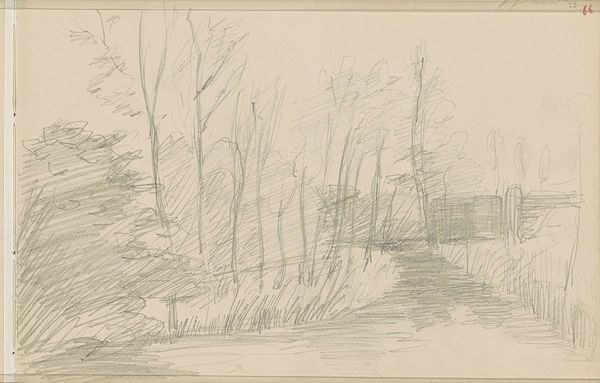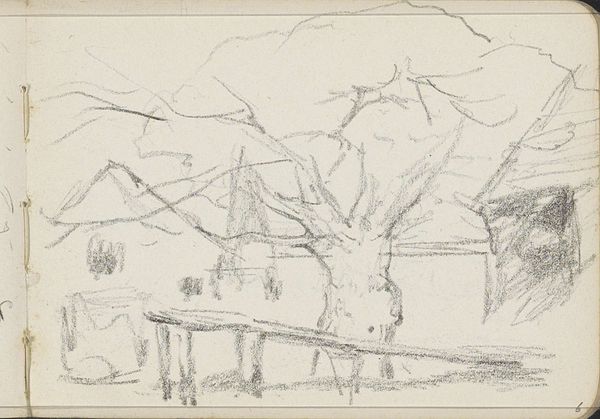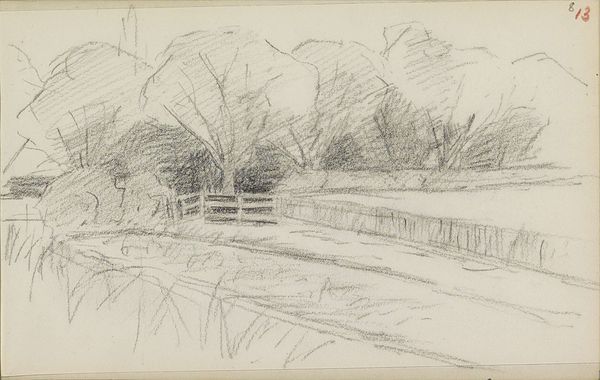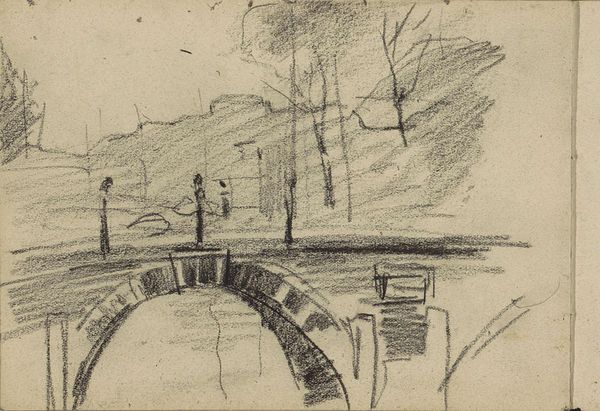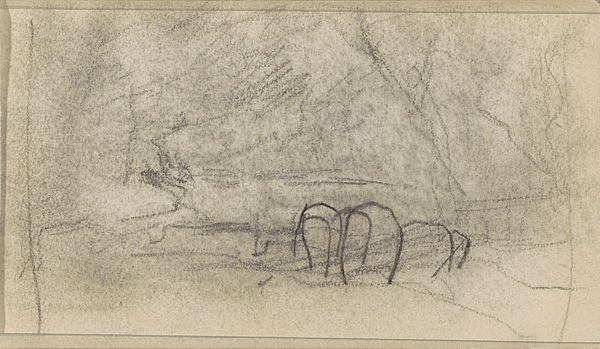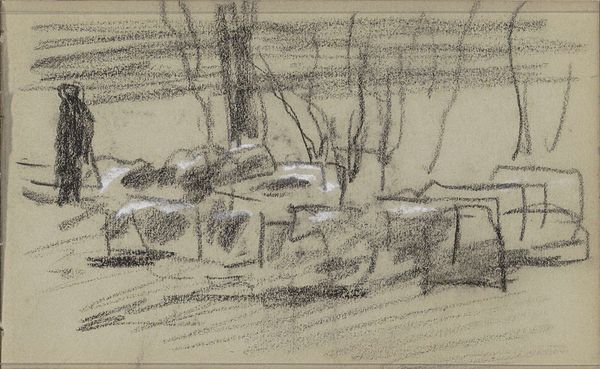
drawing, pencil
#
drawing
#
impressionism
#
landscape
#
pencil
#
realism
Copyright: Rijks Museum: Open Domain
Editor: So, here we have Jozef Israëls’s "Schuur en een hooibaal in een weiland," a pencil drawing that likely dates somewhere between 1834 and 1911. It feels... simple. Raw. Like a quick sketch rather than a finished piece. What stands out to you? Curator: It evokes the cycle of harvest. The barn, a protector, watches over the hay bale, a symbol of past labor, memory made tangible. Consider the symbolic weight of the hay bale itself – the labor condensed, stored energy, and promise of future sustenance. It grounds the scene and viewer in a shared human experience. Editor: Interesting. I see it more as just…a barn and a haystack. Is it really so significant? Curator: Visuals such as a humble barn are rarely ever “just” barns. What visual cues suggest more to us? Consider its placement: is it dwarfed by nature? Protected by it? Editor: Hmm, the trees definitely surround it. It looks…integrated. Almost like the barn is growing out of the landscape, as if to become another symbol for integration within an environment. The texture of the trees mirrors the texture of the hay. Curator: Precisely! Consider the time period: could this also hint at industrial encroachment? Is this an elegy for a rural life in transition? Are we witnessing not just a scene, but a memory being constructed? Editor: I never would have thought of that. Thanks! This little drawing suddenly has so much to say. Curator: Every mark carries cultural DNA. It’s about learning to listen.
Comments
No comments
Be the first to comment and join the conversation on the ultimate creative platform.
